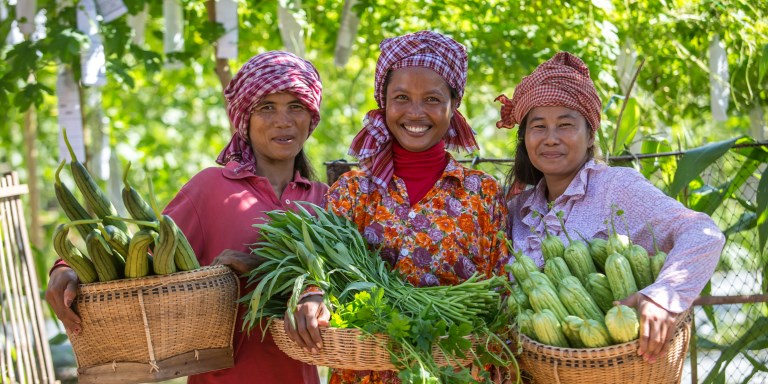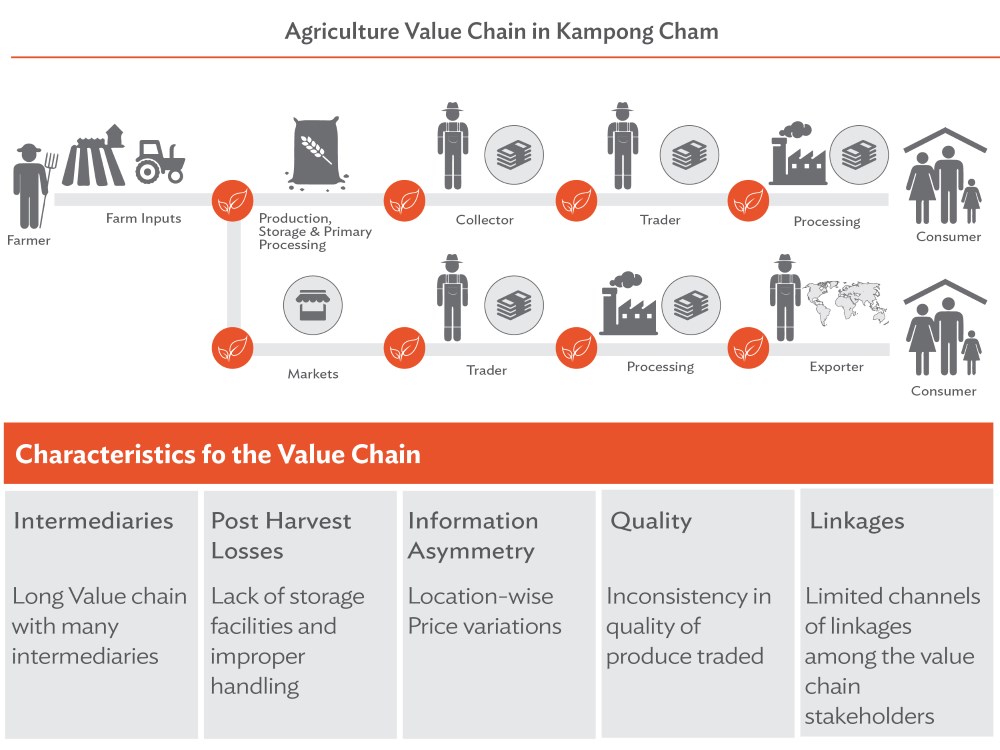
Four Ways Smart Technology Can Help Farmers
This case study was first published by Development Asia.
Overview
Much of Cambodia’s poverty reduction accomplishments relied on the agriculture sector, which recorded exceptional growth in 2004-2012. But agricultural productivity and production in recent years showed signs of slowing. This trend is recorded even in Kampong Cham, a province known as the agriculture center of Cambodia.
Home to an increasing number of businesses, Kampong Cham represents the future of Cambodia’s fast-growing economy and industrial and overall societal development. The province has abundant fertile land, farm labor, draft animals, and groundwater resources. It also benefits from a good road network and proximity to Viet Nam, which opens trade opportunities with the net rice exporter. But farmers are facing numerous challenges, including decreasing earnings, higher production cost, and problems in achieving product quality.
A recent study shows that an e-agriculture platform can help address the inefficiencies that lead to farmers’ lack of competitiveness. It consists of four components: climate smart agriculture, agribusiness portal, farm credit, and risk management (crop insurance).
This is a summary of E-Agriculture Platform for Kampong Cham Province, a study funded by the Asian Development Bank (ADB) under a technical assistance project. The report, led by ADB’s Sustainable Development Team and executed by Ernst and Young LLP (EY) India team, explores the feasibility and application of ICT tools for climate-friendly and inclusive agricultural value chains in Kampong Cham, Cambodia.
Key Findings
The line from farmer to end user in Kampong Cham is peppered with various intermediaries that make the process long.
In every step of the agriculture value chain, there are inherent characteristics and challenges that affect the competitiveness of the province’s agriculture sector. Among these are:
There are very limited post-harvest infrastructure facilities for the farmers. Many of them store their crops in the open.
Even the government faces difficulties in undertaking better planning for the sector due to the unavailability of real time on-ground data. Traders use their own channels to determine prices. Farmers are at a disadvantage in terms of their lack of access to reliable market information affecting their produce.
The absence of enforcement mechanisms to control the quality of seeds and agro-chemical inputs in the markets affects the quality of produce.
Farmers suffer from low liquidity and limited access to formal credit sources. Banking networks are not well established in Kampong Cham. Agriculture accounts for a very small percentage of commercial bank loan portfolios.
The lack of effective linkages between stakeholders in the value chain hampers the ability of exporters to meet importer requirements. Moreover, farmers are unaware of global quality requirements in rice trade, for instance.
This results in poor knowledge in the use of agricultural inputs, techniques and soil improvement management. Advisory support through various channels of the existing Agricultural Marketing Information Service is insufficient and obsolete.
Farmers are exposed to extreme climate conditions (flood, flash flood, and drought) resulting in major crop losses and income uncertainty.
Recommendations
A proposed e-agriculture platform – using ICT tools, smart data management and farm management systems – will connect the various stakeholders and help farmers overcome current challenges.
The platform will consist of several access channels, such as mobile, kiosk, desktop, call center, radio, and television, among others.
The optical fiber network in Cambodia is growing at a rapid pace and most of the national highways are covered by the network. Kampong Cham’s telecom infrastructure is relatively better than the rest of Cambodia with its telecom tower density reasonably good with multiple providers. More than 80% of the farmers use mobile phones and of those 20% use smartphones. High-speed internet is available at affordable rates and social platforms, including Facebook, are widely used to disseminate information.
The ICT solutions consist of four components that can improve the effectiveness and efficiency across the agricultural value chain and mitigate the inherent risks across stakeholder activities:
This approach will have: (i) advisory and information dissemination which will provide demand-driven and market-oriented information to farmers and other stakeholders; (ii) climate smart precision farming where farms will use IT such as internet of things based sensors, drones, satellite imagery to improve techniques; (iii) soil and mobile rice testing which can assess the health of soil and quality of produce and provide improvement/correction measures; and (iv) traceability system to track product history from production stage till end user reach.
The portal will have an e-market place connecting producers and buyers, which will lessen the need for many intermediaries and enable both producers and buyers to access the same set of market information. It also includes an agri-input e-market, which will facilitate trade of agriculture inputs, such as seeds and planting materials, fertilizers, pesticides and farm equipment.
An ICT intervention model will provide farmers information and access to formal sources of credit. This will allow them to avail of low-cost credit directly from financial institutions. It will also allow financial institutions to check the past transactions of the farmers, which the institutions can use to provide differential interest rates.
Risk management (crop insurance) will be an ICT intervention model supporting the government’s risk management system and payout program. This is seen to pave the way for the creation of farm insurance products.

